- Home
- Willow Rose
Rebekka Franck Series Box Set Page 24
Rebekka Franck Series Box Set Read online
Page 24
"We're pretty sure it is a male."
"Why?"
"Because we found semen in the first victim and the second victim nearly strangled with one hand and held down even as he fought for his life. It looks like the job of a very strong man."
I nodded and noted eagerly. "The way the victims were killed, what does that tell you about the killer you're looking for?"
"He has to be one sick bastard."
I noted on my pad so fast it almost hurt my hand. This was a great and very strong statement.
"Is it fair to say that we have a serial-killer?" I asked.
"It might be."
"Is it or isn't it?"
"Well normally we say that a serial-killer is someone who murders more than three victims one at a time in a relatively short interval. That's the definition. So if we stick to that, then no."
"Not yet," I stated and wrote it down. "Are you expecting more killings in the future? Do you think he will kill again?"
"We always hope for the best and prepare for the worst. We sincerely hope to find this killer before he strikes again. It is after all very rare in Denmark that a murder mystery remains unsolved."
"You said you'd found semen, so that means you must have a DNA-profile?"
"We have a DNA-profile, yes. But haven't found a match yet."
I noted on my pad. More that I could now put in my article.
"Listen I really have to go now ..." he said.
"Just one more thing."
He paused. "Okay. One more."
"Should people in Karrebaeksminde be afraid?"
Johannes Lindstroem signed deeply. He didn't answer for a long time. I knew this was a delicate question. At one point the police didn't want to scare the public on the other hand they didn't want any more victims. They wanted people to stay safe and be cautious.
"Okay. Let me rephrase that," I said. "Do you tell your own family to stay inside after sunset tonight?"
He inhaled deeply then exhaled while he spoke. "Yes. Yes I do."
"So people should be afraid?"
"I know I am."
CHAPTER 16
I WROTE THREE ARTICLES. One about the new killing, one about the search for Brian Poulsen and one about how the head of the police in Karrebaeksminde wants people to be careful. I put in all of Johannes Lindstroem's statements and then I sent everything to my editor feeling pretty good about it. This had to be a lot better than what the Express had been able to come up with.
I was right. Jens-Ole called me a few minutes later and was very pleased.
"I loved the part where he says that 'It has to be one sick bastard' that's excellent. Scary too. I'm not much into scaring our readers, but I think he is right. We need to be careful these days with a guy like him on the loose. Lobotomy? Who would come up with such a creepy thing?"
"I don't know," I said and stared at Sune. He was still working at trying to gain access to Brian Poulsen's computer. Apparently he really had his work cut out for him on this. But Sune wasn't the type who just gave up, I was pleased to see.
"Sure would make a great horror movie," Jens-Ole said. "I want you to do an article about lobotomy for tomorrow. We need to keep this story going. This is our story now, this is yours. We need some more insight. What is lobotomy exactly? Where was it used and so on? Enlighten people a little."
I noted his idea. "I'll get on it right away," I said and hung up. I turned and looked at Sara. She took off her headphones. "Any news?" I asked.
She shook her head. "They're closing everything down now at the sports center. They're done."
"Could I ask you to help me on some research?" I asked.
"Sure."
"I want to write a story about lobotomy. Could you find some articles and an expert who would want to do an interview tomorrow morning?"
"With pleasure," she said and started typing.
I received an e-mail, the picture of Brian Poulsen that the police had sent me. I forwarded it to my editor along with Sune's pictures from the same morning. We didn't have a picture of the body leaving the scene this time but what we had was also great. Sune had done an excellent job. The pictures of the forensic team working were splendid, almost beautiful. The way he used the light and the shadows made it almost artistic and less nauseating. The detailing was perfect. He had captured how they worked with tweezers and small brushes marvelously. I was very proud to send it all to my editor.
After it was done I went to the kitchen and brought back more coffee for Sune and Sara. They were both working so hard on making me look good. I was truly grateful.
I sat behind my desk and started researching a little myself on lobotomy and its use. According to Wikipedia Lobotomy was a neurosurgical procedure that was controversial since its inception in 1935, it became a mainstream procedure for more than two decades, prescribed for psychiatric - and occasionally other - conditions despite the recognition of serious side-effects.
The idea was that the procedure was supposed to attenuate the anxiety and unrest the patient was feeling, but many patients became almost apathetic. The nerves were destroyed and many patients ended up as vegetables and lots of them died. In 1946 a man named Walter Freeman took an ice pick from his own kitchen and hit it through the forehead of a patient just above the eyeballs and managed to cut over the nerve paths and thereby invented a new way of doing the lobotomy - a way he later used with a scalpel on more than two-thousand four hundred patients. Some of his operations were even shown on TV in the United States. From the early 1940's until the mid-1950's it was commonly used on psychiatric patients until modern antipsychotics were introduced. By 1951 almost twenty thousand lobotomies had been performed in the United States. After that it was slowly phased out over there. But apparently not in Denmark.
Denmark was an ugly statistic when it came to the use of lobotomy. Denmark had the world record for the most lobotomies compared to the size of the population and the usage of the procedure continued way into the 1990's according to a website I found. Someone, a historian, recently wrote a book about his discovery and was interviewed by a paper, but I couldn't seem to find the article in the paper's database. The article was mentioned on this website where they quoted from it. According to what they wrote, the historian stated that "many Danes were lobotomized between 1947 and 1993, and many died from the operation. Doctors did not count on curing them completely, but wanted to pacify them, perhaps to better their condition."
I leaned back a little shocked. Was this really true? Had they done that this late? In the nineties? The article was only two years old, but I had never heard of this before, nor had I heard about the book.
"I think I might have found someone," Sara said.
I looked at her.
"You probably know her already. She's pretty famous. Dr. Irene Hoeg. She's the Chief Psychiatrist at Rigshospitalet, Copenhagen's University Hospital."
"Also known as the leader of the political right-wing populist party ‘Danish Front,’" I said. "She's the one with the most nationalistic opinions. Never afraid to say just what she means. Always a spokeswoman for the 'Let's get rid of all the immigrants and anyone who doesn't look anything like us' -opinion that is growing in this country."
Sara nodded. "I've seen her in the news." She paused. "She has also won prizes for her research on the human brain. She agreed to tell you about lobotomy. She is an expert on the subject, the best in the country. But you'll have to drive to Copenhagen early in the morning. She has agreed to meet you at her house at ten even though it is Sunday."
"Good work everyone," I said. "Let's call it a day."
Sune stared at me with disbelief. "I'm not done yet," he groaned.
"Let's leave it and try again tomorrow. Maybe the police will do the work for us. Then we can read about it in the report."
Julie gave me an angry look when I entered the door to my father's house. It was almost dinner time and Dad was in the kitchen. Julie was sitting by the table still with the game of monopoly in fron
t of her.
"Smells great, Dad," I said and threw my bag on a chair.
"You're right on time," he said. "Dinner is ready in five."
I grabbed a chair and sat next to Julie. "Sorry I had to leave you like that, sweetie," I said.
"Why didn't Tobias come here today? Wasn’t Sune at work with you?" she asked.
I sighed. "Yes he was. But Sune had a neighbor watch him.
Julie wrinkled her small nose. "But why?"
I shrugged. A bowl of steaming potatoes landed on the table in front of me. I started packing the game back in its package to make room for the food and plates. "Who knows? Maybe the neighbor wanted to play with him? Maybe they're friends?"
"Tobias doesn't have any other friends. He told me that." Julie snorted.
I put my hand to cover hers. "I know you want to play with him, and I'm sure he will be back someday soon. But Tobias and Sune have other things too. We're not the only people in their lives."
Julie snorted. "I think you screwed it up. You did something. I just know you did. You ruined everything."
A dish with lamp chops landed on the table. It smelled incredible. I looked at Julie. She was almost in tears. I didn't know what to say to her. Even if Sune and I were still friends we had to keep apart socially for a while. It was crucial that we did. I really didn't want to separate the children because of it but it was hard to see any alternatives. Dad sat down. He looked at us both.
"Let's eat."
CHAPTER 17
DR. IRENE HOEG LOOKED like she always did on TV. She wore her long hair in a bun on the neck and a tight strict smile making her seem superior to others. She was wearing a white shirt and nice beige pants with creases. She was in her mid-sixties but looked much younger. Her skin was light, her eyes blue and her hair dyed blond. She was tall for a woman I noticed as I entered her huge mansion in Hellerup north of Copenhagen - the whiskey belt as it was called since so many rich people lived there. Her handshake was firm and strong. It almost hurt my fingers.
She showed me into her office and sat behind a huge mahogany desk. I sat in a chair in front of her quite intimidating desk.
"Can I get you anything?" she asked. "Coffee?" She pointed at a tray next to us with two cups and a silver pot.
"That would be nice. It was a long drive."
"Help yourself," she said.
I poured a cup and put in some milk. I sipped it while finding my notes. I looked up. Behind Irene were framed pictures of her and people she had worked with in front of different buildings. She noticed I was looking at the pictures.
"Yes after more than thirty years in psychiatry I have been around," she stated. "I began my career at Montebello in Elsinore."
"The psychiatric hospital that was later made into an asylum camp for refugees from the war in ex-Yugoslavia, right?"
"Yes and now I believe it is a nursing home for the elderly among other things. Back in the old days it was called a Sanatorium. Where people with bad nerves were admitted. In 1969 a youth section was created at Montebello. That was where I started my career as a psychiatrist."
"When was that?"
"1975. I worked with young people for many years. It wasn't until 2001 when I was headhunted to the position at Rigshospitalet that I stopped working with the youngsters."
"Did they do lobotomies at Montebello?"
She nodded. "They did. But only in very rare and difficult cases where there was no other treatment that would work. It stopped shortly after I had started working there. In 1977 they did the last one."
"Have you ever done any?"
"I actually performed the last one in Montebello. After that the politicians decided to stop it. It was my first and my last."
I nodded and noted it. So she did really know what she was talking about. She hadn't only read about it in textbooks in med-school. That was good. Scary, but good.
"So what can you tell me about lobotomy? How did you feel about having to do that procedure on someone?"
"The patient was no more than eighteen years old. She had severe manic-depression and paranoia and there was nothing more we could do for her. We had given her electro-shock, held her down in a straitjacket; we had strapped her down, everything you did back then to help a young woman in her situation. But she kept hurting herself. She tried to kill herself and even others who came near her at times. She was just dangerous to her surroundings and in the end, once you've tried all there is to try; you go for the last resort. I recommended the lobotomy after consulting the other doctors at the facility and we all agreed on doing this. It really was the best for everybody."
"So what happened to her afterwards?"
"She lived the rest of her life in a nursing home, died ten years ago, I believe. The point is that it actually worked for her. I know it's controversial but the fact remains that it did help some patients back in those days."
"But didn't you ever think that it was a little excessive to open a person's brain and cut the nerve paths?"
Irene Hoeg shook her head. "We didn't back then. The idea was to cut off the connection in the brain so to speak, it was believed that thoughts and ideas and patterns were stored in the nerves of the brain. Insanity was a thought process that was kept in the nerve paths and if you cut those you could remove bad or abnormal thinking and behavior. It was a clinical procedure along with so many others. All I ever saw was that it worked."
"But it also killed a lot of patients by damaging their brains and others became apathetic vegetables for the rest of their lives. Like your patient who ended up in a nursing home," I said.
"Correct. But wasn't that better than her killing someone? That was what she was going to do. She was a wild beast. I do believe we saved her from doing something really bad either to herself or to others."
I noted on my pad while thinking that I understood what she was saying but couldn't escape the thought that there had to have been some other way to treat the poor girl.
"But today we luckily have antidepressants and antipsychotics," I said.
The doctor closed her eyes and nodded slowly. "That we do."
"The article that I'm doing is sort of a background story about lobotomy. You know its history, who invented it, where was it used in Denmark and so on. But what I really would love to add to the article is a little detailed information about the procedure itself."
Dr. Irene Hoeg leaned over her desk. "Like what?"
"You have tried it, right?" I said.
The doctor nodded. "Like I told you. Once." She lifted her forefinger to emphasize that it was only the one time.
"Is it difficult?"
The doctor looked at me with wonder. "Is what difficult?"
"To make the cut precisely. Is it something anyone can do?"
Dr. Irene Hoeg remained pensive for a few seconds. "I don't believe anyone could do it correctly, no. You need to know about the brain. How it is put together, where everything is at, where to open it, which nerves to cut."
"Of course, but if the purpose is to kill someone, then it's not that hard is it?"
"I suppose not. If you don't care what you do then no. Anyone with a scalpel can open up the brain and cut the nerves. Provided that they know how to hold and cut with a scalpel of course."
I speculated as I wrote on my pad. The forensic report had stated that it didn't seem like a professional cut, but also that it was hard to tell since Susanne Larsen had still been alive and therefore had tried to fight for her life. Could it have been professionally made if she hadn't moved and fought? I looked at Dr. Irene Hoeg's hands. They were shaking slightly. Could the cut have been made from someone who used to do this professionally but now was older? But how was the murderer then supposed to be so physically superior to Anders Hoejmark that he could hold him with only one hand? Maybe if he was strong and in shape like Dr. Hoeg, despite her age? It was possible. Somehow this had to have a connection to what had been done back then. Somehow the killer was trying to state something by performing this proce
dure on his victims. But why? What kind of statement was it? Why was it so important?
"I think that was everything," I said and got up from my chair.
"That was fast," Dr. Hoeg said and escorted me to the front door. She walked with strong athletic movements.
As we reached the door I turned and looked at her. "Say have you heard about the historian who wrote a book two years ago stating that there had been cases of use of lobotomy on patients in the Nineties?"
Irene Hoeg shook her head. "I know of this so-called medical historian and his work. It's not true. The lobotomies ended in the late Seventies in this country. Of that I am certain. No psychiatric patients have been lobotomized since."
"But where did he get his information from then?"
"I don't know where he gets his ideas from. It's ludicrous. But I do know that he was forced by the publisher right after the publication of the book to recall it and excuse all of his statements made in it. It was merely accusations. He was just trying to get his fifteen minutes of fame. Now if you'll excuse me I have a granddaughter to see. It's her birthday."
"It was very kind of you to see me today," I said and shook her hand one more time before I walked down the stairs. The gravel crunched under my feet as I walked across the driveway to my car.
I had a strange feeling as I turned on the engine, a feeling that I needed to find this medical historian and talk to him.
CHAPTER 18
BACK AT THE OFFICE I wrote an article on 'The history of lobotomy through times' and another one about how it was used in Denmark. I didn't get into the discussion about when it had stopped in Denmark instead I used Irene Hoeg's statement that she had done the last one at the psychiatric hospital where she was back then and that she had no knowledge of there being done after that.
"I'm in!" I heard Sune exclaim. "I am finally in!"
I looked up from the screen and my eyes met his. He had both his arms over his head. "I did it," he said.

 Where the Wild Roses Grow
Where the Wild Roses Grow The Eva Rae Thomas Mystery Series Box Set 2
The Eva Rae Thomas Mystery Series Box Set 2 Girl Divided
Girl Divided Her Final Word
Her Final Word DRIP DROP DEAD (Emma Frost Book 12)
DRIP DROP DEAD (Emma Frost Book 12) SAY YOU LOVE ME (Eva Rae Thomas Mystery Book 4)
SAY YOU LOVE ME (Eva Rae Thomas Mystery Book 4) Emma Frost Mystery Box Set 4
Emma Frost Mystery Box Set 4 The House That Jack Built
The House That Jack Built Order and Chaos
Order and Chaos Chaos and Courage (The Vampires of Shadow Hills Book 10)
Chaos and Courage (The Vampires of Shadow Hills Book 10) Waltzing Matilda (Emma Frost Book 11)
Waltzing Matilda (Emma Frost Book 11) DON'T TELL (Jack Ryder Book 7)
DON'T TELL (Jack Ryder Book 7) TO DIE FOR (Eva Rae Thomas Mystery Book 8)
TO DIE FOR (Eva Rae Thomas Mystery Book 8) Eva Rae Thomas Mystery Box Set
Eva Rae Thomas Mystery Box Set Chaos and courage
Chaos and courage The Vampires of Shadow Hills Series: Book 4-6
The Vampires of Shadow Hills Series: Book 4-6 SUCH A GOOD GIRL: An urgently timely gripping mystery with a heartbreaking twist (Eva Rae Thomas Mystery Book 9)
SUCH A GOOD GIRL: An urgently timely gripping mystery with a heartbreaking twist (Eva Rae Thomas Mystery Book 9) War and Order
War and Order Blood and Fire
Blood and Fire Magic and Witchcraft
Magic and Witchcraft Beauty and Beasts
Beauty and Beasts HER FINAL WORD (JACK RYDER Book 6)
HER FINAL WORD (JACK RYDER Book 6) LET ME GO (Eva Rae Thomas Mystery Book 5)
LET ME GO (Eva Rae Thomas Mystery Book 5) Witchcraft and War (The Vampires of Shadow Hills Book 7)
Witchcraft and War (The Vampires of Shadow Hills Book 7) Ten Little Girls
Ten Little Girls You Can't Hide: A pulse-pounding serial killer thriller (7th Street Crew Book 3)
You Can't Hide: A pulse-pounding serial killer thriller (7th Street Crew Book 3) Never Walk Alone
Never Walk Alone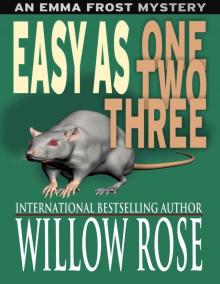 Easy as One Two Three (Emma Frost)
Easy as One Two Three (Emma Frost) Three, Four ... Better lock your door. (Rebekka Franck #2)
Three, Four ... Better lock your door. (Rebekka Franck #2) Seven, eight ... gonna stay up late (Rebekka Franck #4)
Seven, eight ... gonna stay up late (Rebekka Franck #4) Tweedledum and Tweedledee (Emma Frost)
Tweedledum and Tweedledee (Emma Frost) Miss Polly had a Dolly (Emma Frost #2)
Miss Polly had a Dolly (Emma Frost #2) Fire and Beauty
Fire and Beauty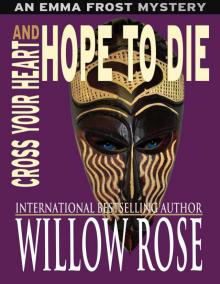 Cross your heart and hope to die (Emma Frost #4)
Cross your heart and hope to die (Emma Frost #4) Beyond (Afterlife book 1)
Beyond (Afterlife book 1) Jack Ryder Mystery Series: Vol 1-3
Jack Ryder Mystery Series: Vol 1-3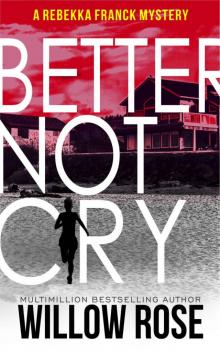 Better Not Cry (Rebekka Franck Book 8)
Better Not Cry (Rebekka Franck Book 8) Emma Frost Mystery Series Vol 7-9
Emma Frost Mystery Series Vol 7-9 Eleven, Twelve ... Dig and delve (Rebekka Franck Book 6)
Eleven, Twelve ... Dig and delve (Rebekka Franck Book 6) Rebekka Franck - 03 - Five, Six ... Grab Your Crucifix
Rebekka Franck - 03 - Five, Six ... Grab Your Crucifix It's Not Over
It's Not Over Harry Hunter Mystery Box Set
Harry Hunter Mystery Box Set Blackbird Fly
Blackbird Fly One, Two ... He Is Coming for You
One, Two ... He Is Coming for You I am Wolf (The Wolfboy Chronicles)
I am Wolf (The Wolfboy Chronicles) Beasts and Magic (The Vampires of Shadow Hills Book 5)
Beasts and Magic (The Vampires of Shadow Hills Book 5) Courageous: Afterlife Book Four
Courageous: Afterlife Book Four NO OTHER WAY (Harry Hunter Mystery Book 3)
NO OTHER WAY (Harry Hunter Mystery Book 3) Flesh and Blood (The Vampires of Shadow Hills Book 1)
Flesh and Blood (The Vampires of Shadow Hills Book 1)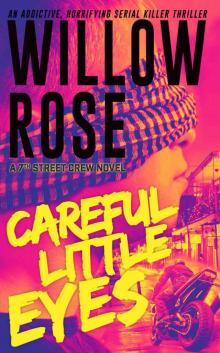 Careful little eyes: An addictive, horrifying serial killer thriller (7th Street Crew Book 4)
Careful little eyes: An addictive, horrifying serial killer thriller (7th Street Crew Book 4) Rebekka Franck Box Set
Rebekka Franck Box Set Blackbird Fly (Umbrella Man Trilogy Book 2)
Blackbird Fly (Umbrella Man Trilogy Book 2) Mommy Dearest
Mommy Dearest Savage (Daughters of the Jaguar)
Savage (Daughters of the Jaguar) Jack Ryder Mystery Series: Vol 4-6
Jack Ryder Mystery Series: Vol 4-6 A Gypsy Song (The Eye of the Crystal Ball - The Wolfboy Chronicles)
A Gypsy Song (The Eye of the Crystal Ball - The Wolfboy Chronicles) The Bird
The Bird What Hurts the Most: An engrossing, heart-stopping thriller (7th Street Crew Book 1)
What Hurts the Most: An engrossing, heart-stopping thriller (7th Street Crew Book 1) There's no place like HOME (Emma Frost Book 8)
There's no place like HOME (Emma Frost Book 8) Beasts and Magic
Beasts and Magic Flesh and Blood
Flesh and Blood Black Jack: A nail biting, hair-raising thriller (Jack Ryder Book 4)
Black Jack: A nail biting, hair-raising thriller (Jack Ryder Book 4) The Afterlife Series Box Set
The Afterlife Series Box Set You Can Run: A heart gripping, fast paced thriller (7th Street Crew Book 2)
You Can Run: A heart gripping, fast paced thriller (7th Street Crew Book 2)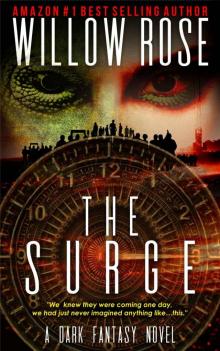 The Surge
The Surge It Ends Here
It Ends Here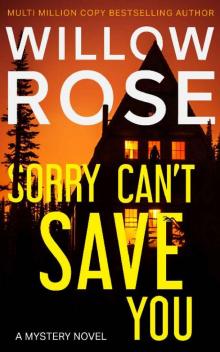 SORRY CAN'T SAVE YOU: A Mystery Novel
SORRY CAN'T SAVE YOU: A Mystery Novel The Afterlife series Box Set (Books 1-3)
The Afterlife series Box Set (Books 1-3) Run Girl Run
Run Girl Run Nine, Ten ... Never sleep again (Rebekka Franck #5)
Nine, Ten ... Never sleep again (Rebekka Franck #5) Rebekka Franck Series Box Set vol 1-5
Rebekka Franck Series Box Set vol 1-5 Peek A Boo I See You (Emma Frost #5)
Peek A Boo I See You (Emma Frost #5) Thirteen, Fourteen ... Little boy unseen (Rebekka Franck Book 7)
Thirteen, Fourteen ... Little boy unseen (Rebekka Franck Book 7) Edwina
Edwina Fire and Beauty (The Vampires of Shadow Hills Book 3)
Fire and Beauty (The Vampires of Shadow Hills Book 3)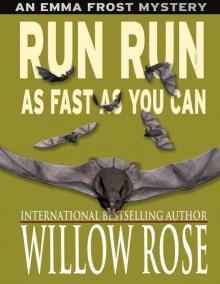 Run run as fast as you can (Emma Frost #3)
Run run as fast as you can (Emma Frost #3) Horror Stories from Denmark Box set
Horror Stories from Denmark Box set Rebekka Franck Series Box Set
Rebekka Franck Series Box Set Witchcraft and War
Witchcraft and War Itsy Bitsy Spider (Emma Frost #1)
Itsy Bitsy Spider (Emma Frost #1) One, Two ... He is coming for you (Rebekka Frank #1)
One, Two ... He is coming for you (Rebekka Frank #1) Ten Little Girls (Rebekka Franck Book 9)
Ten Little Girls (Rebekka Franck Book 9) Broken
Broken